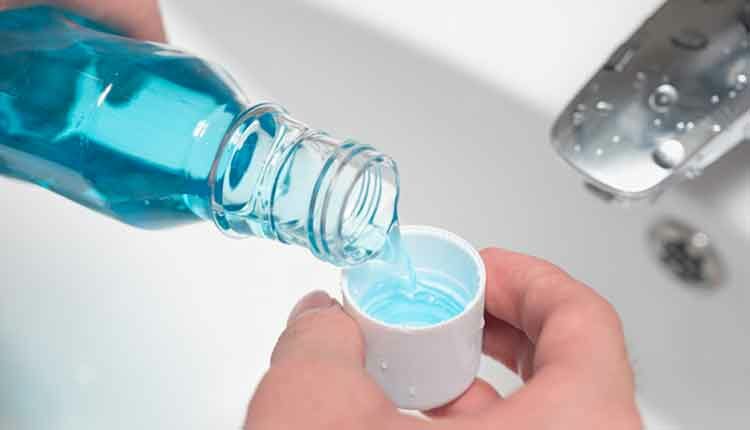 Jae Young Ju / iStock / Getty Images Plus
Jae Young Ju / iStock / Getty Images Plus
Therapeutic Rinses May Help Curb Transmission of SARS-CoV-2
While therapeutic mouthrinse is often prescribed to help control oral biofilm and for other preventive uses, researchers continue to investigate whether such rinses may reduce or help neutralize SARS-CoV-2 in the oral cavity. A study by O’Donnell et al,1 for example, focused on the coronavirus’ lipid membrane to determine if these agents — including chlorhexidine, ethanol, povidone-iodine, cetylpyridinium chloride and hydrogen peroxide — could disturb the pathogen’s lipid envelope. The results indicate that, to varying degrees, select rinses may disrupt and reduce concentrations of the virus, and should thus be considered as a potential means of curbing COVID-19 transmission.
Research by Vergara-Buenaventura and Castro-Ruiz2 investigated the use of preprocedural rinses containing hydrogen peroxide, povidone-iodine, cetylpyridinium chloride or chlorhexidine. Their analysis of in vitro data supports the potential of this approach in reducing SARS-CoV-2 viral loads in the oral cavity, although efficacy varied by agent. Encouraging further studies and pointing to the dearth of clinical research, the authors suggest preprocedural rinsing may limit viral loads and cross-infection risk.
Similarly, a 2021 study by Chopra et al3 found that povidone-iodine rinses are a promising modality for limiting the spread of COVID-19. Noting that in vitro studies and patient-based clinical trials confirm povidone-iodine’s virucidal properties against SARS-CoV-2, the authors assert that using a virucidal mouthrinse is “imperative” during the pandemic. Citing in vitro research that proves its effectiveness in reducing SARS-CoV-2 loads in the nasopharynx, oral cavity and oropharynx, they conclude 0.5% povidone-iodine rinse is a “simple, inexpensive and safe adjunct to reduce the risk of cross-transmission.”
While the results of existing and ongoing research are encouraging, most studies have been conducted in vitro, which further underscores the need for large-scale clinical and population-based trials to establish or refute the efficacy of these modalities in reducing the spread of COVID-19.
REFERENCES
- O’Donnell VB, Thomas D, Stanton R, et al. Potential role of oral rinses targeting the viral lipid envelope in SARS-CoV-2 infection. Function (Oxf). 2020;1:zqaa002.
- Vergara-Buenaventura A, Castro-Ruiz C. Use of mouthwashes against COVID-19 in dentistry. Br J Oral Maxillofac Surg. 2020;58:924–927.
- Chopra A, Sivaraman K, Radhakrishnan R, Balakrishnan D, Narayana A. Can povidone iodine gargle/mouthrinse inactivate SARS-CoV-2 and decrease the risk of nosocomial and community transmission during the COVID-19 pandemic? An evidence-based update. Jpn Dent Sci Rev. 2021;57:39–45.


